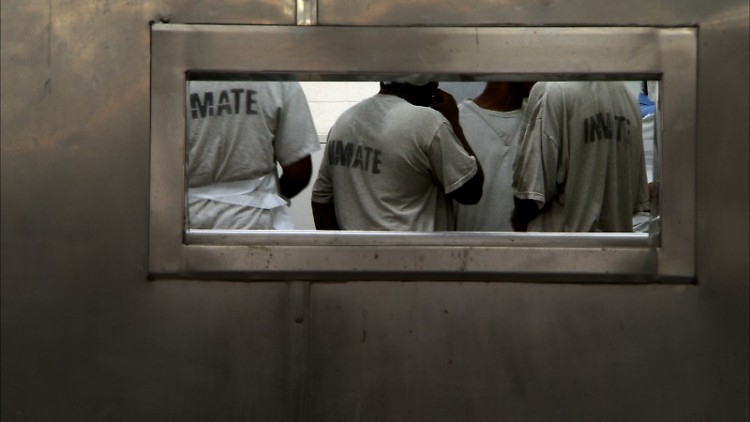“The House I Live In”, now showing at the Urban Institute for Contemporary Arts (UICA), is one of the most important movies I’ve ever seen. A documentary by Eugene Jarecki (“Why We Fight,” “Freakonomics”), “The House I Live In” covers the extensive history and consequences of The United States’ “War on Drugs.” It also delves into the ramifications that crusade has had on American society as a whole, as well as the perpetuation of this country’s ongoing prison industrial complex. Through staggering statistics and in-depth interviews with an impressive range of scholars, Jarecki’s film shines a spotlight on one of the most disturbing and least-talked-about issues in our country’s history.
The film begins by documenting the reality of those whose lives are directly and currently being impacted by the War on Drugs and the drug trade in general. Jarecki establishes an extensive network of contacts within the drug realm: from the dealers and users to the law enforcement officers who are dedicating all their departments’ resources to catching and arresting them.
The film illustrates the ease with which a life in drug use and drug dealing is perpetuated in poor neighborhoods throughout the country. In many cases, children in these neighborhoods are growing up with the belief that dealing drugs is the only way they will be allowed to survive in this country. Many of these children are growing up with at least one incarcerated parent, which statistics have shown already makes it more likely for a child to also be incarcerated at some point in their life.
Jarecki’s research depicts a stark reality wherein millions of children in this country are growing up with no hope for a better future.
“My mom used to tell me I was gonna die before I was 18,” said Maurice Haltwinger, who had, at the time of filming, just been sentenced to a mandatory minimum sentence of 20 years in prison for a nonviolent drug charge.
As the film progresses it delves into the drug war’s history, dramatically expanding the film’s range. Jarecki’s coverage here includes the original allocation of two thirds of the “War on Drugs”’ budget being allocated towards treatment rather than incarceration (something that has long since been abandoned) as well as the tendency for the arrests made in the name of that war to consistently and disproportionately affect this country’s African American population.
Mandatory minimum sentences, like the one reluctantly handed down to Maurice Haltwinger, are also discussed at length in the film.
Mandatory minimums came into being during the Reagan presidency. Ronald and Nancy Reagan were particularly fervent crusaders for the War on Drugs, and shortly after Reagan was elected president a new drug menace surfaced to apparently ravage the country: crack cocaine.
Because the perception of crack at that time was that it was smoked largely by black citizens, the legal system instituted a 100:1 sentencing ratio. This means a conviction surrounding use or sale of crack carries a sentence literally 100 times more severe than one handed down for regular cocaine, which was perceived as a drug more commonly used by white Americans.
“That’s why I agreed to be interviewed [for this film],” said Mark Bennett, the judge who presided over Haltwinger’s trial. Bennett was the first circuit judge to bring the punitive ratio for a crack case down to a 1:1 ratio in relation to a cocaine charge. The attempt to reduce Haltwinger’s sentence failed, but created a symbolic precedent for change in the way drug cases may be handled in the judicial system’s future.
Some of the more disturbing aspects of the film center around the lack of incentive to alter the trajectory our current prison system is following.
Jarecki informs the viewer that the United States is currently home to 5% of the world’s total population, but has 25% of the world’s prisoners. There is literally no nation in the world that locks up its citizens with the zeal of the United States. Second, third, and fourth place fall to Russia, China and Saudi Arabia.
Huge portions of the United States’ economy are dependent on the prison system. The film demonstrates that prison growth provides work for construction companies, furniture manufacturers and private health care providers. It also provides employment opportunities for those who live in their general vicinity. And these aspects don’t even take into account the amount of U.S.-manufactured goods that would no longer be possible without the continued and exploitative use of prison labor.
The most damning argument of all, however, remains in the global and historical context of the“War on Drugs.”
In the film, Abraham Lincoln scholar Richard Lawrence Miller outlines what he calls “The Chain of Destruction” as it relates to the drug war and particularly its effect on the black citizens it disproportionately targets.
He recites the chain as follows:
- For one reason or another the targeted group’s lives are deemed as worth less than the rest of society’s.
- That group is isolated and ostracized from the rest of society.
- Confiscation of the group’s rights and civil liberties.
- Concentration. The group is removed from the world at large and placed into a more concentrated area, be-it a ghetto, a camp or a prison.
- Annihilation.
In Miller’s estimation the drug war has progressed as far as step four, with small steps taken in the direction of step five in the form of mandatory minimum death sentences, life in prison or more sinister routes like providing incentives for women of color to agree to sterilization surgeries.
“The drug war is a holocaust in slow motion,” says journalist David Simon in the film.
“The House I Live In” is a wake-up call to anyone who thought the “War on Drugs” is providing a service for this country and its citizens. The film demonstrates that rather than providing long-term solutions the drug war and the prison industrial complex it feeds is only serving to perpetuate the original problems it set out to apparently solve. The film presents a lucid, highly organized and compelling argument that Jarecki successfully intersperses with an oftentimes heartbreaking human element.
It’s a film that both empowers and challenges its viewers by providing a landslide of information and immediately following up with a question: what can be done to reverse a cycle of violence and injustice of such an absurd magnitude?
“The House I Live In” opens at the UICA Friday, December 7 and will be shown until December 20.
The Rapidian, a program of the 501(c)3 nonprofit Community Media Center, relies on the community’s support to help cover the cost of training reporters and publishing content.
We need your help.
If each of our readers and content creators who values this community platform help support its creation and maintenance, The Rapidian can continue to educate and facilitate a conversation around issues for years to come.
Please support The Rapidian and make a contribution today.

